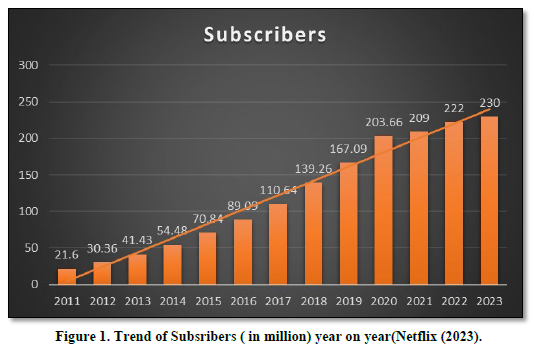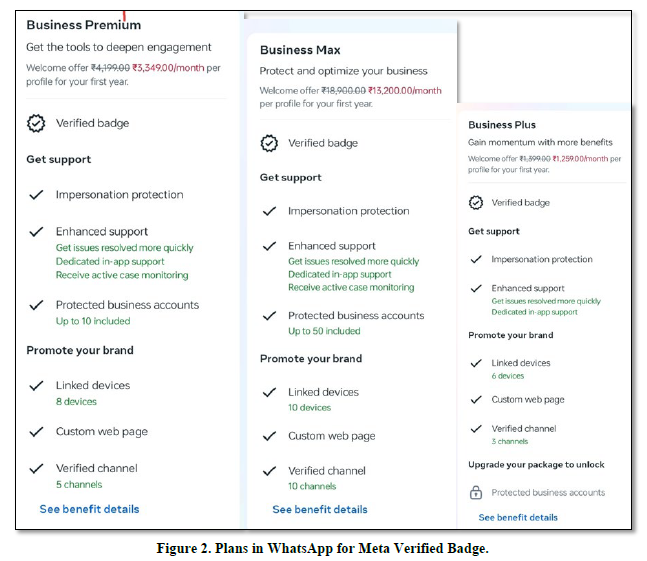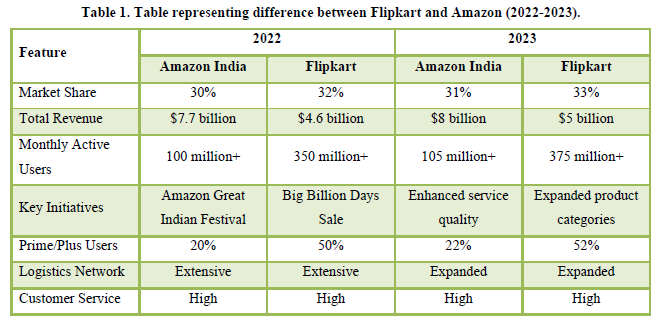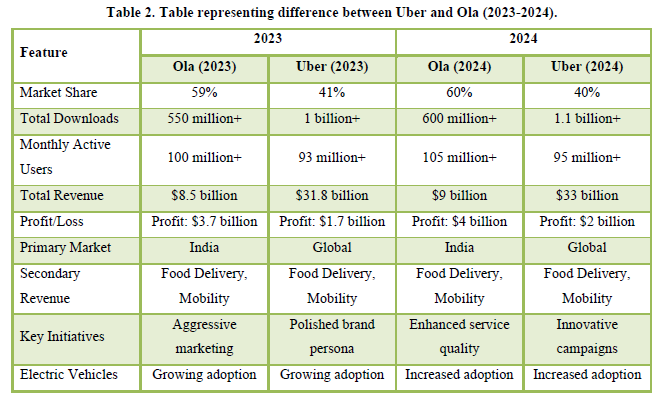13412
Views & Citations12412
Likes & Shares
Business models are very dynamic which adds value to its customers in various ways. In 21st century, the way business is conducted have changed exponentially. Traditional retailer, wholesalers, manufacturers and service providers have innovated their way to do business. Now, age old business goodwill is indirectly enjoyed by other company which in turn is making its own brand. Subscription based models, Freemium business models and Marketplace or E-commerce market place are latest innovative ways to perform business. Needless to mention, competition is everywhere but the way people are making strategies and changing business models is crucial to understand. Even one’s personal data has become raw material for businessman to earn money. Netflix has used subscription-based business models to grow 10x in a decade and has become king of streaming world. Integrating AI with business with strong supply chain has enriched Flipkart, Amazon like companies to build their brand just from a webpage. Uber, Ola are making money enlisting people with cars to allow passengers enjoy their driving services. Though services are provided by someone else through their own business, but the mediator or platform providers are making money. These innovative business models fueled by AI has made taxing their revenue very complex. OECD has been established with union of 38 countries to ensure that the tax is paid in the same country where the earning has been made.
OVERVIEW OF BUSINESS
Traditionally business was simply known to be supply of goods or services. Goods and services were two major area of business which do exists today as well but the way of doing business has seen a pyramid of change. What has seen a great shift is services. Boom in sector of services is seen in multi-fold times as comparison to that of goods. For this 21st century, Business may be defined as selling or rendering services of/for everything that are visible or invisible. In Goods sector, it is as simple as it was earlier, one person sells goods to other and other buys from the person. The person selling the goods may be manufacturing on its own or purchasing from others. Nothing has changed in this sector other than the way of doing business which is termed as business models. Traditionally, there were shops specified for variety of goods like for grocery, apparels, electronic devices, computer and its equipment, automobiles and so on. Things remains same for goods sector to certain extent.
Services sector has changed a lot from just way of serving being professionals like doctors, teachers, CAs, etc. or other non-professionals from their local place to other local people. Now, services reach to such nook and corner of the earth, where professionals have never been physically. Digitization and the way digital world are changing, serving people has become more easier with wider scope.
BUSINESS MODELS
What management or an entity’s strategy towards earning profit may be termed as business model. The heart of the business model lies on value proposition, it makes to the customers distinct to the existing one. Goods or services remains the same but the way they are catered to the customers sometimes distinct the business models as well. The business models do not remain constant throughout the life of a business. It’s changing to undermine the possible threats around in the market. Major factor for change in business models is the external environment which majorly include customer demands.
TYPES OF BUSINESS MODELS
Traditionally we see, retailer and wholesaler who sales out something that is manufactured by manufacturer and the services providers charges their fees for the services they render. Apart from the traditional retailer/ wholesaler, manufacturer and fees for services, lots other business models are in place which will be discussed in this article.
SUBSCRIPTION BASED BUSINESS MODELS
Subscription based business models defines such business which requires recurring payment to enjoy their services. As in case of software or insurances services, once subscription period has expired, the license to enjoy the services get expired too. Advanced Subscription based models has almost eradicated the old ways of enjoying media on TV. OTT platforms commonly called as Subscription video on Demand like Netflix, Amazon Prime, Hotstar, Disney etc. has flourished by multiple times on year on year diminishing the play for big cinema halls. Subscribers’ counts are increasing day by day.
CASE STUDY ON NETFLIX
Netflix: a snail-mail DVD rental business started in 1997 which has now pioneered the world of streaming entertainment with more than 200 million subscribers. This graph presents an exponential growth in number of subscribers over the period of nearly a decade where Netflix had only 21 million subscribers in year 2011 which has grown up to 203.66 million in year 2020. In year 2023, the subscribers count has increased to 230 million subscribers with revenue of $32 Billion which was $25 billion in Year 2020. Netflix had increased its content library from 15000 titles in 2020 to 22000 in year 2023. It may be called as king in Streaming world. So, what was the business model behind such a big success despite competitors like Disney, Adobe were posing stiff competition to the company (Figure 1).

Customer retention rate for Netflix is 93% with average3 hours /day viewing time per user as per data in year 2023. How was this all done is dependent upon the vast technological innovation company has bought in and its business model. It has introduced interactive content in year 2020 and enhanced recommendation algorithms in year 2021. It improved its streaming quality and also reduced buffering in year 2022. Introduction of AI driven Content creation tools helped it to achieve extra 8 million subscribers and 93% customer retention rate (Netflix (2023).
Subscription based business model with 3 major plans: Basic, Standard and Premium has been major revenue stream for Netflix. Keeping Alliance with Smart TV companies like LG, SONY, WII, Xbox PlayStation like gaming companies, Dish and other TV network, Google, Amazon, Samsung, and Japanese Anime Creators, film makers, writers helped Netflix to be more competitive on Streaming world. 24-7 streaming anywhere the view shows and movies in High Definition and an unlimited access to TV shows and movies with culturally relevant content and sharing accounts, the rarest feature in movie platform is what creating value proposition for Netflix to bag up the success at $163 billion net worth.
FREEMIUM BUSINESS MODEL
Most of the social media and other brands come with Freemium business models where they have both free services which may be used lifetime but the benefits from premium services are highlighted to customers to lure them to use advanced features upon making the payment. This is commonly seen in LinkedIn, YouTube, Canva, most of the Apps, etc. which are majorly free for them most of services, but on payment for premium version, the advanced features get loaded. WhatsApp also has come with the Meta verified badge which requires subscription to various plans for business users. This business model has now an edge in this era as comparison to those running traditionally (Figure 2).

MARKETPLACE/ E-COMMERCE BUSINESS MODELS
Marketplace/ E-commerce business models simply offer a platform for variety of business to conduct their transaction. They aid in shifting their business from local area to wider area where they might not reach on their own effort. These business models come with webpage or an application that are freely usable by every-one. They allow free listing of supplier and once the order are placed, their charges /revenue begins. These business model simply provides a platform which is such powerful that it integrates every item from luxury items to simple household items. It may be said that all those needed from multiple stores are combined here. It is important to note that they don’t have their own store or some may have warehouses but they earn from the brand someone already have made by making them available on their platform. People from their serviceable area once ordered at their platform, these business’ do not themselves go to their place, instead items from local vendors are only shown to such customers. Indirectly, it may be said that they are making money from others business just by providing platform and a wider scope. Recent news in India Business Standard on 30 Oct 2024, around 2 lakhs Kirana stores (grocery stores) have been shut down due to e-commerce platforms like Flipkart, amazon, etc. Thus, this business model may be defined as business of business through a platform (Table 1).

On similar business models but restricted to travels, fooding, etc. other business models are also having boom in 20th century. Uber, Ola, Rapido, etc. have similar business models where they list peoples with their automobile details and connect them with the people willing to travel through their platform. Again, their service is limited to only platform, they neither own the cab in which customer travel nor they themselves or through their own employees’ rides/drives the vehicle. Just through their platform, they ease searching the customers for existing cab drivers. This was limited to Cab which has extended recently to tempo and motorcycle. This business model earns through charge that customer pays to driver directly or indirectly through online payment mode. Unlike uber or Ola, in-drive works on different business model where anyone (may be usual driver as his main work, or anyone else) who is travelling from one place to other place or planned to travel, may keep their plan in this app which would be highlighted to such customers who are looking to travel to that destination from that place. Now, these two people are connected and they make their ride complete. This business model has also only intangibles as their assets which earns revenue through other’s physical effort just with an idea to make them reach to their potential customers (Table 2).

Almost with similar business models in food industry, Zomato, Swiggy has enlarged their space in India connecting dots between customers and restaurant with their delivery agent through a platform. Their services also include premium services to avail more advanced features. This marketing strategy and adding other growing or grown business net worth indirectly in own’s portfolio is trending these days.
SPECIAL BUSINESS MODELS: BUSINESS FROM EXISTING BUSINESS
The extraordinary business model is the one whose input as well as output is data or simply which plays with data be it personal or business. Rarely there exists someone who have no idea about Facebook, Instagram, You Tube, WhatsApp, Telegram, IMO, LinkedIn, Google Search engine, Twitter and so on. People use this platform for various purpose which is not limited to social media only. Advertisement across these platforms is quite common which is an easy way of earning where prospective clients gets converted through a click. This business model gets customer quicker as comparison to others as they evolve everywhere where customer spend their most of time. It’s not hidden from anyone that if one search for a car in Google then it starts appearing in Facebook, or similar other pages where Google Ads runs. Value proposition for this model is bringing to customer the same thing which once he/she might has thought to buy/sell with lucrative offers. This gets customer converted quicker.
These were such business models which are apparent from their activities. There exist many others business models which are non-apparent which operates from providing free services, collecting data, making a data base and then producing them as a complex software or AI which aids in solving problem in a click away. Collecting personal data in varied platforms is a trend now may be for their records or for anything else. Later on, such data are sold out to others who think those people may become their potential customers and then such people get call/mails/messages which may eventually turns into a customer for that people. So, here thing that is sold is invisible, even not thoughtful for person who was providing his/her personal information to someone who was recording on name of company record. This all shows how business models and ways of doing business have changed from very narrow scope to unlimited scope these days. Nothing in this world has remain free though out to be called as free.
TAXATION IMPACT AND REVENUE LEAKAGE
Due to boundary less source of revenue, it has become quite difficult for taxation of such revenue. Many tech firms are established in one country with their head office and services are being rendered to every nook and corner of the world. This boundary less service availability has made an impact on the way taxation is done for these type of business models. Wide changes have been made in taxation to cover these business models under tax bracket. Tracing IP address of the customer enjoying such services and/or using customer data of a country has been included in taxation matters which determines the way such revenue will be taxed. Equalization levy of 2% has been introduced to such business models. Digital tax is included in international taxation policy. The organization for Economic cooperation and Development (OECD)has been formed which is an organization of 38 countries to tax the revenue in the country from where they are earned. It has introduced various pillars of policy (BEPS- Base Erosion and Profit shifting) to tax such business models.
CONCLUSION
Business models is a varying strategy that has seen pyramidal change in eras. Digitalization has no doubt made the world as a village with full of information and communication across the world as an easy task. This has however evolved variety of business models which picked up a traditional retail shop to widen its scope from its own locality to other parts in its country or every outside the country through establishing an easily accessible platform where teens can also place order and get their things delivered at their door step. Growing own business using other business has been a trending business model in past decades. Moreover, usage of personal data to create a database which not only defines about people name, age, qualification or basic details but also describes about the trend in market, behavioral background, taste of the age group, and so on. Taxation on other hand has become a major issue on such growing business models which has no boundary to operate. A simple website is accessible from any parts of the world and which may be carrier for revenue for person creating that. Thus, OECD has been developed introducing various pillars of international taxation that covers such business models.
- Amazon.com Inc. annual reports proxies and shareholder letters ir.aboutamazon.com. Available at: https://ir.aboutamazon.com/annual-reports-proxies-and-shareholder-letters/default.aspx
- Netflix - Financials - Annual Reports & Proxies. ir.netflix.net. Available at: https://ir.netflix.net/financials/annual-reports-and-proxies/default.aspx




